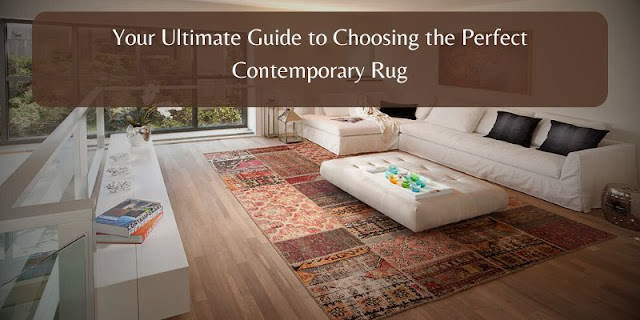How Contemporary Rugs Can Define Open-Concept Living Areas
Open-concept living spaces have become a hallmark of modern interior design, offering an airy, spacious feel that encourages flow and connection between different zones of a home. However, this seamless layout can sometimes make it challenging to create a sense of distinction and structure. One of the most effective and aesthetically pleasing ways to define areas within such layouts is through the strategic use of floor coverings. When chosen thoughtfully, contemporary rugs not only ground a room visually but also enhance its warmth, style, and character.
Bringing Structure to Open Spaces
Open-plan interiors eliminate walls and barriers, which can lead to a lack of visual boundaries between areas like the living room, dining area, and kitchen. The introduction of modern floor designs helps establish clear divisions without disrupting the overall flow. A well-placed carpet can delineate one zone from another, creating a natural sense of order. For instance, placing a large patterned piece under a sofa and coffee table instantly defines the seating area, while a complementary but distinct design beneath the dining set marks a separate zone for meals and gatherings.
This approach creates visual harmony while maintaining openness. By coordinating colors, textures, and shapes, homeowners can ensure that each area feels distinct yet connected. It’s this subtle art of definition that makes these textile pieces an invaluable tool in interior styling.
Adding Warmth and Comfort
One of the most appreciated benefits of floor coverings in spacious interiors is the sense of comfort they introduce. Large, open spaces with hard flooring can often feel cold or echoey. By incorporating a plush or textured surface, the room immediately gains warmth and coziness. The tactile quality softens the feel underfoot, while also improving acoustics by absorbing sound.
In living zones, a soft pile adds an inviting element that encourages relaxation, while in dining areas, a low-pile or flat-weave option can combine practicality with elegance. The selection of materials plays a significant role here — wool offers durability and comfort, whereas jute or cotton blends bring a casual, natural appeal. Through these thoughtful choices, designers can create a balanced atmosphere that feels both expansive and intimate.
Aesthetic Cohesion Through Color and Pattern
Beyond function, floor pieces are powerful design tools for establishing a cohesive color story across open spaces. The absence of walls means that the palette of one area seamlessly blends into another. Using coordinated floor designs helps anchor this transition. A living area featuring neutral furniture can be enhanced with a bold geometric pattern that draws attention and adds visual interest. Meanwhile, a dining section might employ subtle tones that complement the surrounding elements, ensuring consistency without monotony.
Patterns and hues can also be used to influence mood. Warm tones and organic patterns bring energy and vibrancy, while cooler shades and minimal designs evoke tranquility and sophistication. When chosen with care, these elements tie together furniture, lighting, and décor, resulting in a unified and visually appealing environment that celebrates the essence of open-concept living.
Defining Zones Without Barriers
One of the most significant design challenges in open-plan layouts is maintaining distinct functional zones without using walls or partitions. Here, the placement of carpets becomes crucial. Centering a piece beneath a specific furniture group — such as a dining table, lounge sofa, or reading nook — naturally identifies that area’s purpose.
Moreover, using varied sizes and shapes adds dynamic interest. Rectangular options suit elongated spaces, while circular designs soften the edges of angular layouts. Layering can further elevate the look — combining a larger neutral base with a smaller patterned accent piece helps highlight key areas while maintaining visual continuity. Through this approach, homeowners can achieve a well-balanced interior that feels organized yet unrestricted.
The Power of Texture in Modern Interiors
Texture plays a pivotal role in defining and enhancing open areas. Flat surfaces, sleek finishes, and large windows often dominate contemporary architecture, which can make a room appear stark or sterile. Introducing tactile floor coverings balances this effect, bringing depth and warmth.
For instance, a high-pile surface contrasts beautifully with minimalist décor, while handwoven or looped designs introduce artisanal charm. Layering different materials — such as a soft wool base with a woven jute topper — can add dimension and visual intrigue. This textural variation not only enriches the sensory experience but also helps distinguish between spaces within the open floor plan.
Function Meets Style
While aesthetics are key, practicality should never be overlooked. These floor elements must endure foot traffic, spills, and movement between zones. Opting for durable fibers and stain-resistant materials ensures longevity without sacrificing elegance. Additionally, non-slip backing and correct sizing contribute to safety and functionality.
Maintenance is also simpler with the right choice. Regular vacuuming, gentle cleaning, and occasional rotation help preserve both appearance and texture. A quality piece can last for years while continuing to enhance the overall aesthetic of the home. By blending functionality with beauty, these design elements prove that form and utility can coexist seamlessly.
Conclusion
In open-concept living spaces, defining distinct yet harmonious areas is essential for comfort, style, and flow. Thoughtful selection and placement of floor coverings can achieve this effortlessly, offering visual anchors that bring cohesion and character to expansive layouts. Through color, texture, and pattern, homeowners can shape zones that are both functional and inviting. Ultimately, contemporary rugs do more than decorate a room — they unify it, transforming open spaces into beautifully organized, comfortable, and expressive homes.




Comments
Post a Comment